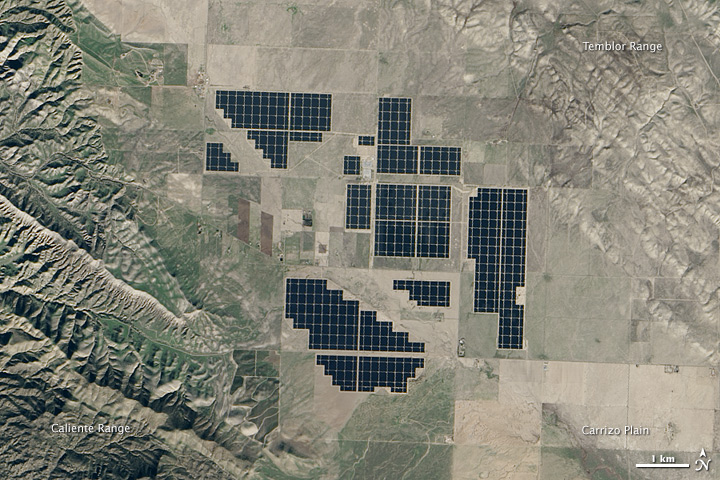
The solar design process is a critical starting point in executing a solar photovoltaic (PV) project. In the age of accessible satellite imagery and innovative software development, designing solar systems for all applications (residential, commercial, or utility scale) has never been simpler. With just a few clicks, you can be well on your way to crafting your custom PV system, determining a best-fit electronic configuration, and discovering your project’s production potential.
1. Instant Layouts Using Aerial Images
Aerial satellite imagery (provided by services like Google Maps) coupled with the intelligence of PV design software makes it easy to specify the number of modules that can fit in a manually selected area. The initial tasks include selecting the desired solar panel model, specifying the modules’ orientation (portrait or landscape), and outlining the space needed for laying out panels. Available PV software is intelligent enough to know the rough dimensions of your selected areas, and pairs the measurement data with panel dimensions to optimize solar array sizing.
You can use PV design software to account for custom considerations including inter-row spacing needs as well as setbacks as required by your Authority Having Jurisdiction (AHJ). For example, Fire Code in the state of California requires that the solar installer include three-foot setbacks in various forms depending on the roof shape. It is important to take this into consideration when designing your array(s) to ensure crafting accessibility for emergency responders in the case of a fire. Check with your local AHJ regarding your local setback requirements for solar.
With the latest solar design software, it is also possible to identify potential sources of shade (trees, power lines, etc) along with various obstructions present on a roof space. PV Complete is an innovative PV design company based in the Powerhouse solar incubator & accelerator (and Greentech Renewables' neighbor) in Oakland, California. PV Complete’s web app, PVSketch, features a sleek, modern, and intuitive interface that allows users to highlight obstructions by simply circling them. When populating the modules in the designated area, the software will know to make sure to stay clear of those obstructions and shaded areas.
Of course, the surest way to confirm that your array(s) will fit appropriately is to pay a visit to the physical job site yourself and confirm measurements to eliminate any doubt. Sizing an array using aerial imagery isn’t a perfect solution, but can certainly be used as a reference for preliminary layouts and estimating purposes.

2. Electrical Configuration Capabilities
PV design software’s inclusion of electrical specifications, namely inverter selection, has made manual string sizing virtually unnecessary. It is streamlined and embedded within the design flow.
Although a variety of inverter manufacturers have their own string-sizing tools in order to confirm optimal string lengths for panel layout(s), you can save an extra step by utilizing PV design software that integrates string sizing.
Helioscope, a popular design tool that prides itself in being the “future of solar design” as well as a leader in performance modeling, does just this, allowing a user to confirm the functionality between selected solar panel model and inverter choice. If possible, the tool will determine a best-fit string sizing configuration and will allow you to adjust string lengths as necessary.
3. Production Data For Proposal Creation
Perhaps the most practical and informative feature of available solar design software is its ability to generate full-fledged proposals and production data assembled from a specified design and electronic configuration. Solar Design Tool, a “one-stop shop for solar design” and proposal generating suite, integrates solar design specification with proposal and Bill of Material generation from the most basic equipment components to more granular BOS product requirements. Additionally, the tool is capable of generating a single-line diagram in minutes that is ready to submit to your local permitting agency.
Generating performance data presents a huge value-add for the latest PV software, through which generated forecasting reports become valuable sales tools. If you work as an installer, you know the value in presenting full-disclosure, monthly anticipated performance data for your end customer. In the performance model below for an 8.5kW DC system, you will be able to identify system production on a monthly basis while taking into consideration module degradation, soiling, shading, and other inefficiencies. Rapid generation of these production reports will unquestionably help in learning about system potential, presenting data, and selling more projects.
![]()
Leave it to Greentech Renewables to take the basic design and layout work off your shoulders at no cost. For more comprehensive engineering designs, our Technical Sales team is at your disposal to help turn around residential and commercial permit packages among other design services. Talk to an Account Manager today who will be happy to assist you with your design needs.